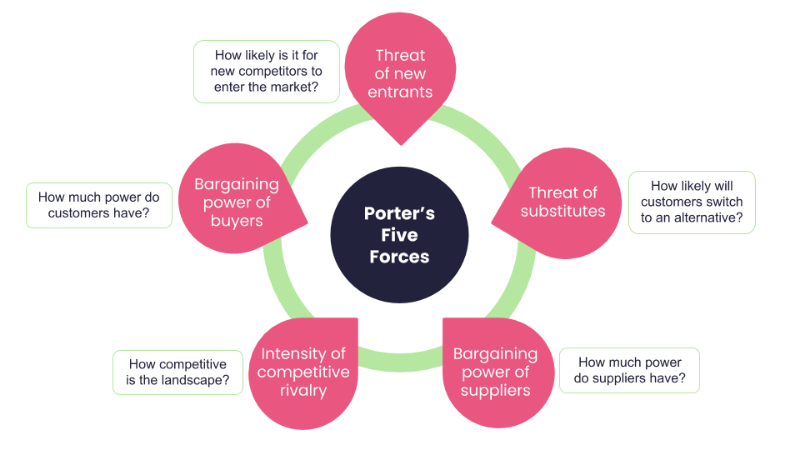A Guide to Competitive Analysis: What Is It and How to Do It


A Guide to Competitive Analysis: What Is It and How to Do It
The business world is ever-changing, and, especially amid the current global climate, businesses need to differentiate themselves now more than ever. This is even more true for any sales professional, as it’s now more about becoming a trusted advisor to your customer than just a salesperson. In order to better position yourself in a competitively advantageous way, you need to first understand the nuances of your competitive landscape.
What is competitive analysis?
Analysing your competitors involves conducting research about your customer market and your competitor companies. A competitive analysis is, essentially, the activity of analysing the strengths and weaknesses of competitors in your industry that could potentially win over your customers by offering similar products or services in a more attractive way. There are a couple of factors to take into consideration, but essentially, conducting a thorough analysis should result in both an offensive and defensive competitive strategy for your business and your sales pipeline. Aspects considered include some of the following:
- Who your competitors are
- What products/services they offer
- How their pricing differs from yours
- How their unique value proposition differs from yours
- How competitors market their products/services
- What technology they use to deliver the solution and engage with customers
- Who their customers are
Why is competitive analysis important?
Consider how confidently you are able to answer the following questions:
- Why would customers buy from you and not your competitors?
- What makes your offering stand out from the rest (albeit the same product or service that your competitors are offering)?
- What is your unique value proposition?
- Does your solution speak to the needs of your customers, and is it better than the offering of your competitors?
- Where is your offering falling short; where are competitors a step ahead?
- What problems does your solution solve; are there any that your competitors can’t solve?
These are all really good questions to constantly ask yourself, and remember why understanding your competitive landscape is so vital to the growth and success in any business. Discover how to start a business.
Learn the Psychology of Sales
Learn how to become an unstoppable salesperson, marketer and networker.
How to do a competitive analysis
This would highly depend on the industry you are in, and on the complexity of your product or service. There are many popular ways to conduct this type of analysis, one of the most common methods being the SWOT analysis framework. This method entails the identification of your business’ strengths, weaknesses, opportunities, and threats.
SWOT analysis
1. Strengths
- What you do well
- What unique resources you can draw on
- What others see as your strengths
2. Weaknesses
- What you need to improve upon
- Where there may be a lack of resources
- What others are likely to see as weaknesses
3. Opportunities
- Which strengths you can use as opportunities
- Which new trends you can take advantage of
4. Threats
- What threats do your weaknesses expose you to?
- Is there potential for the customer’s needs, or even the industry’s needs, to change?
The SWOT method is an effective analytical framework for better understanding your own business as well as the business of your competitors. An even more in-depth method of conducting a competitive analysis is by using the business model canvas structure.

How to be an industry expert and trusted advisor to your customers
Customers like to deal with experts, which is why the top sales professionals in any industry will invest much of their time into understanding industry trends and positioning themselves as experts in their field. One sure way to prove yourself as an expert is to have a good understanding of your industry and the competitors that play along in your field. Once you have developed a reputation as an expert, building trust and rapport with customers will happen quicker and more naturally, as you are portraying yourself as a knowledgeable and trustworthy business professional and source of information.
Porter’s Five Forces
The framework that I would like to recommend for building upon industry knowledge, especially for sales teams, is Porter’s Five Forces framework. Designed by Mr Michael E. Porter, this framework is based on the principle that businesses should formulate strategies on the underlying economics and competitive forces within their industry. Porter’s Five Forces has been around for many years and still proves to be effective as the market becomes more and more competitively intense. Typically used as a business strategy tool, this can very easily be applied to the role of sales-specific competitive analysis, as any good sales professional understands that managing their pipeline should be like managing their own business.

The efficacy of this framework will highly depend on the product or service that you offer, as in some industries the impact of certain threats will be higher or lower than other threats, depending on the market saturation and other internal and external factors. To use Mr Porter’s example: “even a company with a strong position in an industry unthreatened by potential entrants will earn low returns if it faces a superior or a lower-cost substitute product — as the leading manufacturers of vacuum tubes and coffee percolators have learned to their sorrow. In such a situation, coping with the substitute product becomes the number one strategic priority.”
According to Mr Porter, these are the five forces that will have a direct effect on the level of competition a business may face within an industry:
1. The intensity of competitive rivalry
- How competitive is the landscape?
- How diverse are your rivals?
- How are the conditions of the industry changing?
2. Bargaining power of buyers
- How much power do buyers have?
- If a buyer leaves, how much of an impact will it have on your business?
- How easy is it for buyers to leave?
3. Bargaining power of suppliers
- How many suppliers do you rely on to deliver your solution?
- Should suppliers’ prices increase, how much will this affect your offering and the costing implication thereof?
- Are there multiple suppliers that you are able to source from?
4. Threat of substitutes
- How likely will customers switch to an alternative?
- What are the alternatives and how do they compare to yours?
- What level of product substitution at a lower cost are you currently facing?
5. The threat of new entrants
- How likely will new competitors enter the market?
- How viable is it for them to enter the market (what are their major barriers to entry)?
- What could they be doing differently?
What makes this framework so effective is that you are prompted to consider the competitive landscape not only from what already exists but also from the perspective of what may still enter the market. It also prompts you to look at certain aspects from the buyer and supplier side of things, making sure that there aren’t any “blind spots” when analysing your competitive landscape.
A more advanced form of analysing your competition is through adopting competitive intelligence strategies and technologies. This takes a simple SWOT analysis to a whole other level, where multiple sources of information are systematically being collected and processed through powerful business intelligence tools and platforms. It’s an ethical way to gather and analyse data and gain insight on industry information and trends, ensuring that businesses are formulating data-driven strategies that deliver a winning, competitive advantage.
As a sales professional, you should work towards feeling confident in your area of expertise and maintain an attitude of “always be learning”. Learn about your competitors and learn about your customers, that way you’re always having meaningful conversations when working in collaboration with your customers towards a shared definition of success.
Want to learn more? Join our top online Sales course today!
To learn more about how Upskillist can help you click the button below :
Contact Us
Share
![]()
![]()
![]()




